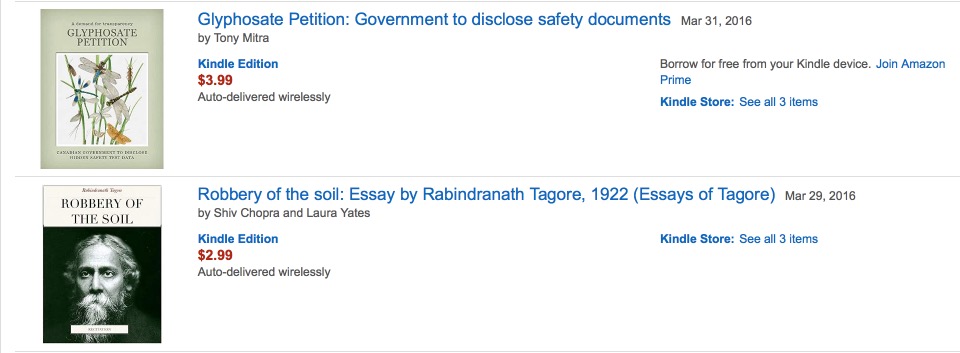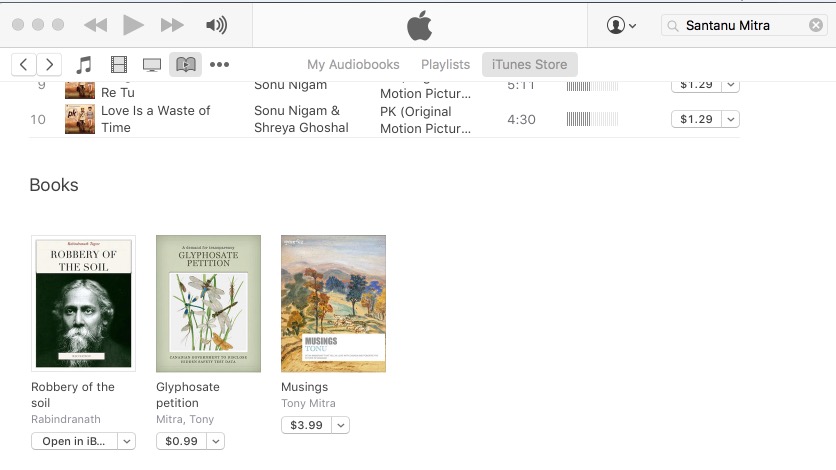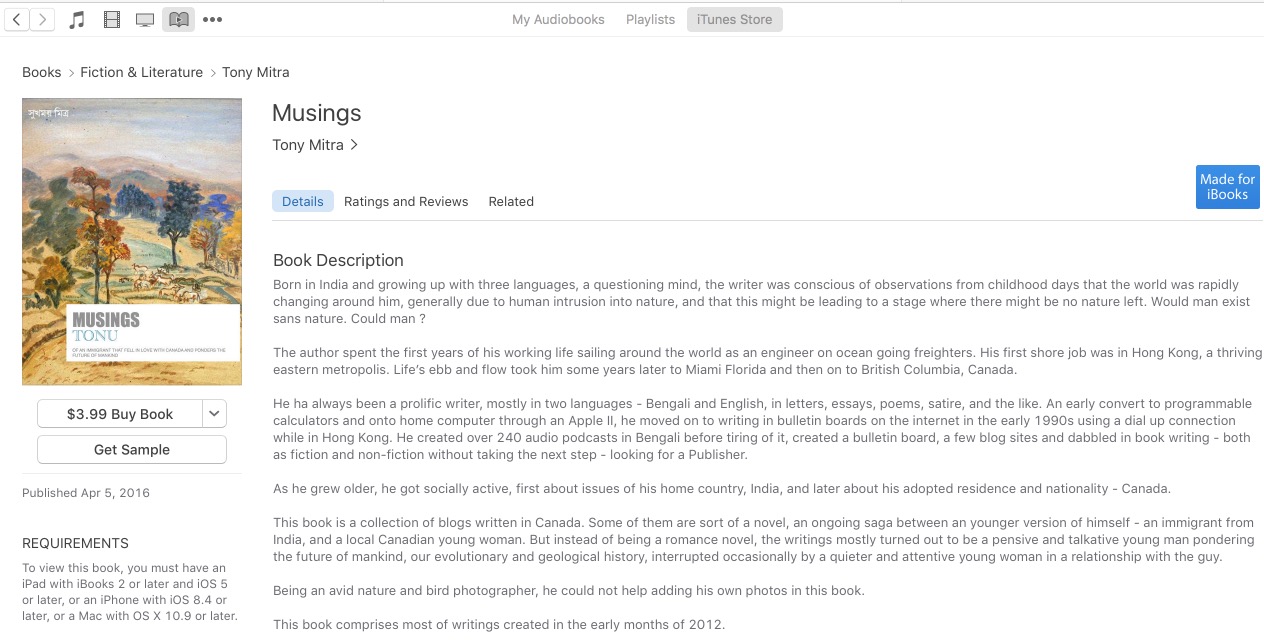Tuesday, April 5, 2016
Writing is a gift – or is it?
Somewhere down the track where we evolved from apes to hominids with a brain that could handle complex sentences and a language, the basic tools for being a speaker were hardwired in.
I am told that this change essentially distinguishes anatomically modern humans from archaic forms, and that this development is rather recent, perhaps under a hundred thousand years old.
And then, much more recently, a mere five to ten thousand years back, folks started scratching around on the sand, of the walls of their caves, to describe something or other – passing phase of the moon, or the tide, or animals that were around them. And as humans discovered pastoralism and agriculture, experienced perhaps the first population spurt, and started building their own homes and not depend on caves, they managed to figure out how to use those scratchings for record keeping and identification. Written text, or script, was on the way.
And thus, although we have not yet evolved to the point where ability to speak in a language or read and write is hardwired into our genetic construct, and we have come some distance towards it. A normal child will automatically pick up a language without being expressly tutored, simply by being around others speaking a specific tongue. Writing or reading, unfortunately is something that a human needs to specifically learn. It does not come automatically by hanging around people, or books, or a pencil.
Nonetheless, it is perhaps a fair assumption that a lot of people around the world can read some and write some, in some language. A few fortunate ones are comfortable in two languages, and some in more than two.
And that brings me all the way to my own situation. I had mentioned I knew three languages – Bengali, which is my mother tongue, Hindi, which is India’s national language, and English, which is the language I used in my profession as well as one of the two working languages of my adopted nation – Canada.
The problem these three languages each uses its own distinct script. This means, even if I am conversant in speaking in those languages, I would need to be familiar with three distinct scripts, or letters, to be able to read or write in any of them. This can be better understood if one considers differences between European languages such as English, Spanish and French. They use the same script, with perhaps a small number of special characters in each. If one is proficient in any language, one could more or less read the other, even if he fumbled with the exact meaning of grammar of it. Not so in my case. The three languages use three different scripts. Hindi and Bengali are both derived from a common mother language – Sanskrit and fall in the same language family, and yet their script separated from each other early on, and now one needs to be totally familiar with the different scripts to be able to read a sentence.
 Anyhow, I write very little in Hindi, although I did part of my early schooling in that language and my first tentative writings and childhood poems were composed in Hindi.
Anyhow, I write very little in Hindi, although I did part of my early schooling in that language and my first tentative writings and childhood poems were composed in Hindi.
My later years in a different part of India in a different school system let me lose familiarity with writing Hindi, while picking up two others – Bengali and English. Today, I can read Hindi and converse in it, but would struggle to write in it.
I type the fastest in english, but that is primarily because the computer keypad is designed for english, and adapting that keypad to other scripts has its hassles, and sometimes I have to press multiple keys to generate a single letter in Bengali, which automatically slows things down and increases chances of mistake. While I can usually type in English without looking at my fingers, I cannot do that easily for Bengali using the same keyboard.
Anyhow, I have a lot of writings done in English and Bengali. And now the time has come I feel, to start publishing some of them since self publication is reasonably easy.
Some years ago, I tried to write a novel, but it turned out to be more a musing of an opinionated immigrant that observed the world around not superficially at the surface, but using What could amount to be a maverick effort at penetration below the surface and check if what we see at the surface is sustainable, or if the root is getting rotten, or in indeed the surface is shiny but is blocking out other parts of our world intending to insert an element of romance, the guy had a Canadian girl with him as they travelled across western Canada. But it was not really up to him to write a romance, and the continuing novella turn out to be a conversation between the two, mostly covering the land, its geological transformation, and evolutionary track of the living world, including man’s involvement is it.
 Nonetheless, the total writings might appear to be somewhat curious and did include musings that I believe deserve to be preserved.
Nonetheless, the total writings might appear to be somewhat curious and did include musings that I believe deserve to be preserved.
Due to sheer bulk of material, the writings needed to be split into multiple volumes. The first volume, covering 133 pages, was put up today. Its sections went as follows :
Captor description : Early writings
Section 1: A vanishing world
Section 2: Missing the world of his father’s paintings
Section 3: Golden
Section 4: An universe for an anchor
Section 5: Quantum mechanics of mass hysteria
Section 6: Storm warning
Section 7: Wish I could write like them
Section 8: Miguel, the Everglades and Lovelock’s warning
Section 9: Eocene Thermal maximum in a bowl of soup
Section 10: When you are right and wrong at the same time
Section 11: Rice in the Vedas
Section 12: Autobiographic blues
Section 13: At the water’s edge
Section 14: How green was my Facebook
Section 15: Suta at the riviera
Section 16: Coffee with a giant rhynoceros
Section 17: Considering Mabel
Section 18: Overload
Section 19: A sunset, mitochondria, peat bog, and a kiss
Section 20: A few pages on a leap year day
Section 21: The ten thousand year old woman
Section 22: The vanishing Y chromosome
Section 23: Cult of Tagore
Section 24: Old woman sacrifices herself.
Section 25: Hello world
And so, I compiled these twenty five blogs into 25 sections of chapter 1 of the book. The book has only one chapter but 25 sections, and is 133 pages long.
 And then I converted it into an iBook (epub) format and uploaded it in Apple store.
And then I converted it into an iBook (epub) format and uploaded it in Apple store.
Next, I exported it to pdf, reimported that for kindle and uploaded it again at Kindle.
Now, I can go have a coffee and plant some more seeds.
